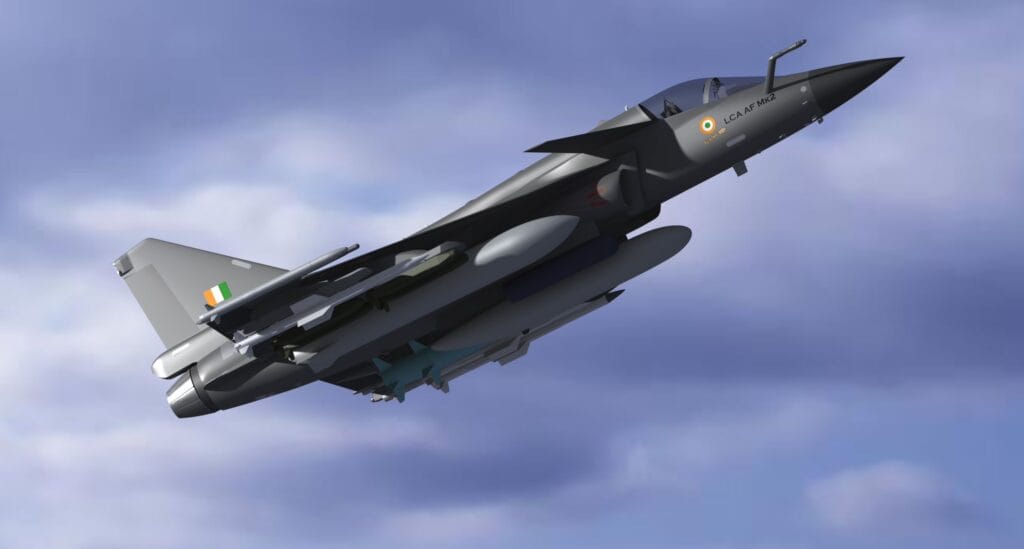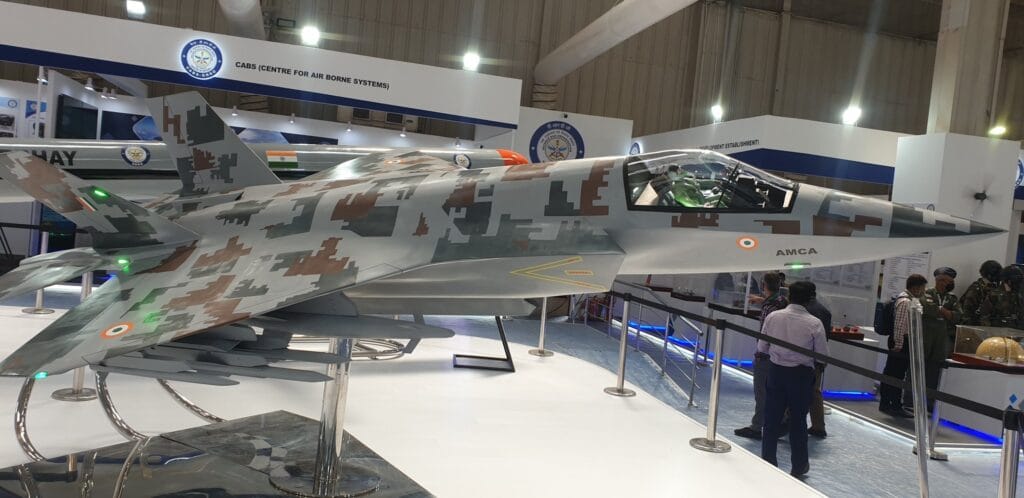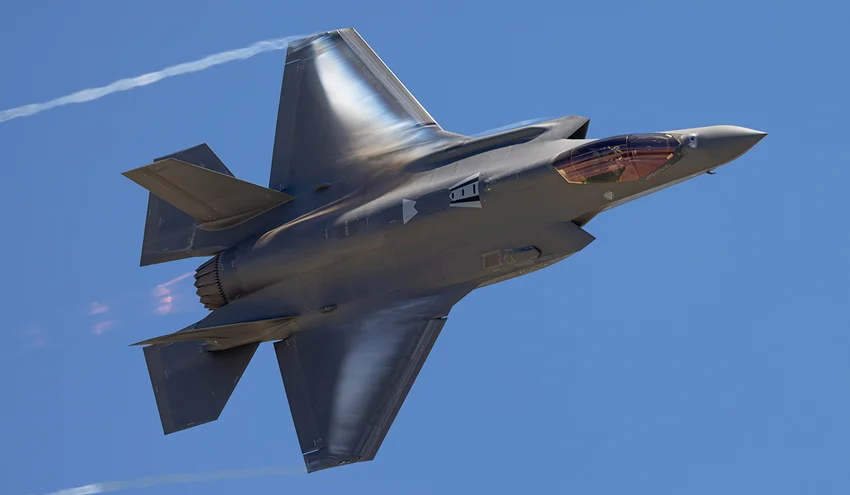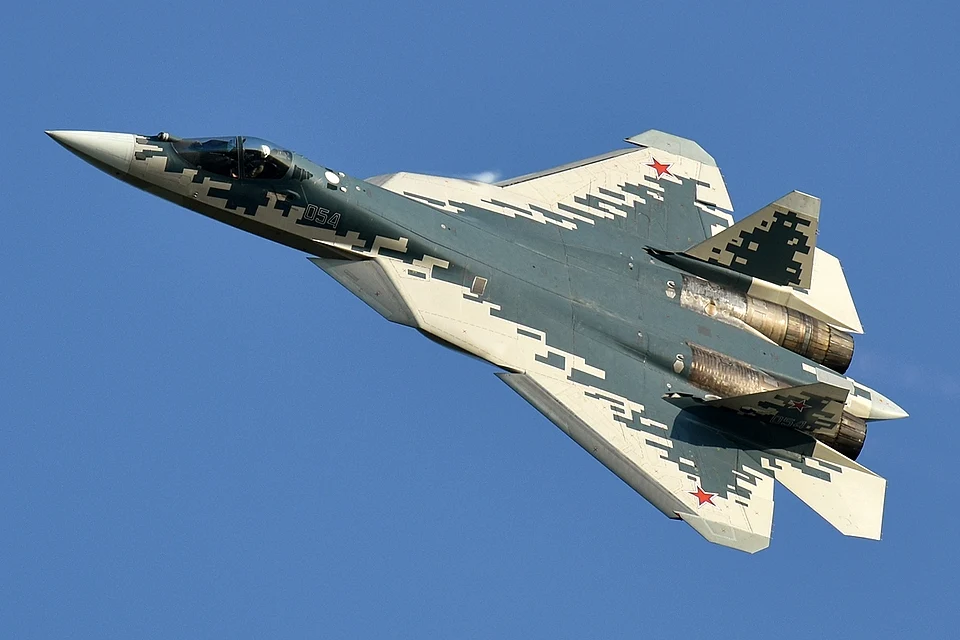The Indian Air Force (IAF) faces an urgent need to modernize its aging fleet amid a depleting squadron strength, exacerbated by delays in indigenous programs like the Light Combat Aircraft (LCA) Tejas and the Advanced Medium Combat Aircraft (AMCA). With only 31 fighter squadrons against a sanctioned strength of 42, the IAF is critically underpowered to counter a two-front threat from China and Pakistan. The AMCA, India’s fifth-generation stealth fighter, is not expected to field its first squadron until 2035-2040, necessitating immediate stopgap measures. The geopolitical fallout from Operation Sindoor, a large-scale Indian airstrike targeting Pakistan’s terrorist facilities in May 2025, has heightened regional tensions and shifted India’s defense calculus, strengthening the case for acquiring Russia’s Sukhoi Su-57 over the U.S. Lockheed Martin F-35 as an interim fifth-generation fighter. This article examines India’s modernization imperatives, the causes of its squadron shortfall, strategies to bridge indigenous delays, and the viability of off-the-shelf fifth-generation fighters in the context of post-Operation Sindoor dynamics.
Depleting Squadron Strength: A Strategic Vulnerability
As of January 2025, the IAF operates 31 fighter squadrons, a significant drop from 39.5 in 2001, against a required strength of 42 to address simultaneous threats from China and Pakistan. Each squadron typically fields 18-20 aircraft, translating to a shortfall of approximately 200 fighters. The retirement of aging Soviet-era aircraft, including MiG-21s, MiG-23s, and MiG-27s, without adequate replacements, has driven this decline. The IAF’s current fleet comprises Sukhoi Su-30 MKIs, Mirage 2000s, Jaguars, MiG-29s, two squadrons of Dassault Rafales, and two of Tejas Mk1s, many of which face obsolescence by 2035.
| Country | Total Combat Aircraft | Notable Aircraft Types |
|---|---|---|
| India | ~616 | Su-30MKI (260), Rafale (36), MiG-29 (65), Mirage 2000 (45), Jaguar (100), HAL Tejas (30) |
| Pakistan | ~400 | J-10C (20+), JF-17 Block III (45–50), F-16 (76), MiG-21/MiG-19 variants |
| China | ~1,900 | J-20 (195), J-10C, other modern fighters and bombers (1,207 total fighters/bombers) |
Notes: Data is approximate, based on sources up to 2025. Fleet changes from 2014–2024: India (-151), Pakistan (+31), China (+435).
Pakistan’s acquisition of the Shenyang J-35, a fifth-generation stealth fighter from China, adds a new dimensionof concern for India’s air superiority. At Aero India 2025, Pakistan announced plans to induct 40 J-35s by 2027,with the first squadron operational by late 2026. The J-35, with its advanced stealth, AESA radar, and ability tocarry long-range PL-15 missiles, poses a direct threat to India’s aging fleet, particularly in contested airspacealong the Line of Control. Backed by China’s strategic support, including joint exercises and technologytransfers, Pakistan’s J-35 procurement enhances its ability to challenge the IAF’s numerical and technologicaledge, especially following Operation Sindoor’s demonstration of India’s offensive capabilities. This developmentunderscores the urgency for India to bolster its own fifth-generation capabilities to maintain regional deterrence.
China’s People’s Liberation Army Air Force (PLAAF) operates over 2,250 combat aircraft, including approximately 300 Chengdu J-20 fifth-generation stealth fighters, with projections of 1,000 by 2035. Pakistan is modernizing its air force with JF-17 Block III, J-10C, and plans to induct 40 Shenyang J-35 stealth fighters by 2027, bolstered by Chinese support. The IAF’s 15-year roadmap aims to procure 450 new jets by 2040 to restore squadron strength, but this hinges on overcoming procurement bottlenecks and production delays. Former IAF chief Rakesh Kumar Singh Bhadauria called this shortfall a “strategic liability” in 2024, underscoring its impact on India’s deterrence in a volatile Indo-Pacific.
| Country | Aircraft Name | Engine | Generation | Quantity |
| India | Dassault Mirage 2000 | SNECMA M53-P2 turbofan | 4th | 46 |
| Dassault Rafale | SNECMA M88 turbofan | 4.5th | 36 | |
| HAL Tejas | General Electric F404-GE-IN20 | 4th | 37 | |
| Mikoyan-Gurevich MiG-21 | Tumansky R-25 turbojet | 3rd | 36 | |
| Mikoyan MiG-29 | Klimov RD-33 turbofan | 4th | 59 | |
| SEPECAT Jaguar | Rolls-Royce Turbomeca Adour | 3rd | 113 | |
| Sukhoi Su-30MKI | Saturn AL-31FP turbofan | 4.5th | 259 | |
| China | Chengdu J-7 | WP-7BM (afterburning turbojet) | 2nd | 289 |
| Chengdu J-10 | Saturn AL-31FN (afterburning turbofan) | 4th | 608 | |
| Shenyang J-8 | WP-6 (afterburning turbojet) | 3rd | 50 | |
| Shenyang J-11 | AL-31F (afterburning turbofan) | 4th | 245 | |
| Shenyang J-16 | WS-10 (afterburning turbofan) | 4th | 300+ | |
| Chengdu J-20 | WS-10C (afterburning turbofan) | 5th | 300+ | |
| Pakistan | J-10 Vigorous Dragon | Saturn AL-31FN (afterburning turbofan) | 4th | 20 |
| JF-17 Thunder | RD-93 (afterburning turbofan) | 4th | 156 | |
| F-16 Fighting Falcon | F100-PW-200/220 (afterburning turbofan) | 4th | 75 | |
| Mirage III | Atar 9C (afterburning turbojet) | 3rd | 58 | |
| Mirage 5 | Atar 9C (afterburning turbojet) | 3rd | 78 | |
| F-7 | WP-7BM (afterburning turbojet) | 3rd | 53 |
This table underscores China’s lead with 5th-generation J-20 (300+), India’s reliance on 4.5th-generation Rafale (36) and Su-30MKI (259 each), and Pakistan’s modernization with JF-17 (156) and J-10 (20), highlighting the regional air power imbalance.
Operation Sindoor: A Geopolitical Game-Changer
Operation Sindoor, launched on May 6-7, 2025, saw the IAF conduct large-scale airstrikes targeting eight Pakistani military sites in retaliation for Pakistan’s attacks on four IAF airbases. The operation showcased India’s offensive capabilities, with IAF jets evading Pakistan’s Chinese-supplied JY-27A radars and downing a Pakistani AWACS and three fighters (an F-16 and two JF-17s). However, it also exposed vulnerabilities: Pakistan’s acquisition of J-35 stealth fighters and China’s regional assertiveness highlight the IAF’s technological and numerical deficits. The operation strained India-U.S. relations, with Washington’s disapproval of India’s unilateral action and Trump’s controversial “nuclear claim” infuriating New Delhi. This has tilted India toward its historical defense partner, Russia, favoring the Su-57 over the F-35 as a stopgap solution.
Delays in Indigenous Programs: Tejas and AMCA
India’s indigenous fighter programs, critical to its self-reliance goals under “Make in India,” face significant delays, leaving the IAF reliant on interim measures.
LCA Tejas: A Slow Climb

Initiated in 1984 to replace the MiG-21, the Tejas program has delivered only 40 Mk1 aircraft across two squadrons by 2023, averaging one jet per year over four decades. The Tejas Mk1, a fourth-generation lightweight fighter, has faced challenges with engine availability, fly-by-wire systems, and avionics integration. The Tejas Mk1A, featuring an AESA radar and enhanced avionics, was slated for delivery in February 2024 but remains delayed due to supply chain issues, particularly with General Electric F404 engines.
The IAF has ordered 83 Mk1A jets, with plans for 97 more, and aims to induct 120 Tejas Mk2 jets, a 4.5-generation medium-weight fighter with GE F414 engines, by 2040. Hindustan Aeronautics Limited (HAL) targets a production rate of 24 jets annually by 2028, but its historical output of 8-16 jets per year raises doubts. IAF Chief Air Chief Marshal A.P. Singh expressed frustration with HAL’s delays at Aero India 2025, stating he was “just not confident” in their delivery timelines.
AMCA: A Distant Fifth-Generation Dream

The AMCA, a twin-engine fifth-generation stealth fighter developed by the Aeronautical Development Agency (ADA), aims to deliver air supremacy, ground strike, and electronic warfare capabilities with a low-observable design, internal weapons bays, and advanced avionics. Approved in 2024 with a $2 billion budget, the program targets five prototypes by 2028, with serial production by 2035 and the first squadron operational between 2035 and 2040. The AMCA Mk1 will use GE F414 engines, while the Mk2 aims for indigenous engines, incorporating sixth-generation technologies like manned-unmanned teaming.
However, the AMCA’s timeline is optimistic. The Tejas took 33 years from concept to combat, and experts like K.P. Sanjeev Kumar estimate AMCA’s final operational clearance could slip to 2040 or beyond. Challenges include unproven indigenous engine development (following the Kaveri engine’s failure) and HAL’s limited production capacity. A high-level committee, formed in March 2025, is tasked with shrinking timelines, but significant hurdles remain.
Bridging the Gap: Strategies to Address Delays
To mitigate delays in Tejas and AMCA programs and restore squadron strength, India must adopt a multi-faceted approach:
- Boost Indigenous Production:
- Expand HAL’s Capacity: HAL must scale up to 24-30 jets annually for Tejas Mk1A and Mk2. The Nashik facility (eight Mk1As/year) and Bengaluru line (16 Mk1As/year) require optimization.
- Secure Engine Supply: Expedite negotiations for licensed F404 and F414 production in India, as agreed with GE in 2023, to resolve supply chain bottlenecks.
- Parallelize AMCA Development: Compress timelines by conducting prototype testing and production planning concurrently, with oversight from the Defence Secretary-led committee.
- Leverage Private Sector:
- Involve private firms like Tata or Mahindra in Tejas and AMCA production to ease HAL’s burden and boost output. The IAF has emphasized private sector participation to meet its 40-jet annual induction target.
- Increase indigenous content (50% for Mk1A, 82% for Mk2) by sourcing avionics, composites, and software from private players.
- Strengthen Program Management:
- Place AMCA under the Prime Minister’s Office for streamlined decision-making, emulating ISRO’s success.
- Establish a dedicated task force to monitor Tejas and AMCA milestones, addressing bottlenecks in real-time, as initiated by the December 2024 high-level committee.
Stopgap Measures: The Fifth-Generation Fighter Dilemma
With the AMCA’s first squadron a decade away and Tejas deliveries lagging, the IAF faces a critical gap in fifth-generation capabilities. Operation Sindoor underscored the urgency of countering Pakistan’s J-35 and China’s J-20, prompting calls for off-the-shelf fifth-generation fighters. IAF Chief A.P. Singh has acknowledged the need for emergency acquisitions if threat perceptions escalate. The F-35 and Su-57 are the primary contenders, but post-Operation Sindoor geopolitics tilt the balance toward the Su-57.
Option 1: Lockheed Martin F-35 Lightning II

Offered by the U.S. during Prime Minister Narendra Modi’s 2025 visit, the F-35 is the world’s most advanced fifth-generation fighter, excelling in stealth, sensor fusion, and network-centric warfare. Its advantages include:
- Technological Edge: A low radar cross-section, advanced AESA radar, and integration with AWACS and drones make it ideal for modern warfare.
- Interoperability: Compatibility with Western avionics and weapons (e.g., MBDA Meteor) aligns with India’s Rafale and Tejas platforms.
- Strategic Alignment: Acquisition could deepen U.S.-India defense ties, countering China in the Indo-Pacific.
Challenges:
- Cost: At $80-100 million per jet and $42,000 per flight hour for maintenance, the F-35 strains India’s $70 billion defense budget.
- Limited Technology Transfer: The U.S. is unlikely to offer co-production, clashing with “Make in India.”
- Geopolitical Constraints: Post-Operation Sindoor, U.S. criticism of India’s actions and continued funding for Pakistan’s F-16 fleet ($397 million) have strained ties. Stringent end-user monitoring and NATO restrictions could limit India’s autonomy.
- Logistical Hurdles: Integrating the F-35 with India’s Russian-heavy fleet would be complex, with a 51% availability rate raising readiness concerns.
Feasibility: Acquiring 36-40 F-35s (two squadrons) could provide a deterrent against China’s J-20, but high costs, limited technology transfer, and post-Sindoor tensions make it less viable unless U.S.-India relations improve significantly.
Option 2: Sukhoi Su-57 Felon

Showcased at Aero India 2025 alongside the F-35, the Su-57 offers a cost-effective, geopolitically aligned stopgap. Its advantages include:
- Affordability: Priced at $40-50 million per jet, it is half the cost of the F-35.
- Technology Transfer: Russia offers local production and critical technology transfer, aligning with “Make in India” and leveraging HAL’s Su-30MKI experience.
- Compatibility: Seamless integration with India’s Russian-heavy fleet and indigenous weapons like Astra and BrahMos-NG.
- Post-Sindoor Appeal: Russia’s unwavering support during India’s tensions with the U.S. and China, coupled with expedited delivery offers by 2026, enhances its attractiveness.
- Regional Deterrence: The Su-57’s supercruise and advanced avionics, while not matching the F-35’s stealth, provide a credible counter to Pakistan’s J-35 and China’s J-20.
Challenges:
- Stealth Concerns: The Su-57’s stealth capabilities are debated, with analysts noting its higher radar cross-section compared to the F-35 or J-20.
- Operational Maturity: Limited use in Ukraine and ongoing development raise questions about reliability.
- IAF Reservations: The IAF rejected the Su-57-based FGFA program in 2018 over cost and technology concerns, preferring Rafale or MiG-35.
- Sanctions Risks: Russia’s global sanctions could disrupt supply chains, though India’s experience with Russian platforms mitigates this.
Feasibility: Procuring 90 Su-57s (five squadrons) with technology transfer could rapidly bolster IAF numbers, support indigenous manufacturing, and provide operational stealth experience until AMCA induction. Post-Operation Sindoor, Russia’s reliability as a partner, India’s need for swift deliveries, and compatibility with existing systems make the Su-57 a compelling choice, provided Russia addresses IAF concerns with upgrades like improved stealth and avionics.
Projection of Indian Aircraft fleet by 2040
Current Fleet Composition
India’s fighter aircraft fleet, as of early 2025, is estimated to comprise 31 squadrons, each typically consisting of 18 aircraft. The breakdown by type, based on recent reports, includes:
- Su-30MKI: 11 squadrons
- Jaguar: 5 squadrons
- Mirage 2000: 3 squadrons
- MiG-29: 3 squadrons
- Rafale: 2 squadrons
- Tejas: 3 squadrons
- MiG-21: 2 squadrons, set for retirement by the end of 2025
This composition reflects a mix of indigenous and foreign-designed aircraft, with the Su-30MKI forming a significant portion of the fleet.
Retirement Schedule
Retirements are planned as follows, based on available data:
- MiG-21: All 2 squadrons will be retired by the end of 2025, completing the phase-out of this aging fleet .
- Jaguar: Retirement begins in 2027-28, with a phased approach expected to complete by 2035, likely retiring one squadron every 1-2 years starting from 2028.
- MiG-29: Phased retirement starts around 2033, expected to conclude by 2036-37, with one squadron retired each year from 2033 to 2035.
- Mirage 2000: No specific retirement date is confirmed, but it seems likely they will remain in service until the late 2030s or early 2040s, given recent efforts to extend their lifecycle through upgrades and spare acquisitions .
Future Projections with Additions
Starting from 2025, the Indian Air Force plans to add 12 new Tejas aircraft annually, and from 2035, 16 AMCA (Advanced Medium Combat Aircraft) aircraft annually. These additions are expected to bolster the fleet:
- Tejas Additions: With each squadron requiring 18 aircraft, the annual addition of 12 Tejas will allow for the formation of new squadrons approximately every 1.5 years, gradually increasing the Tejas squadron count.
- AMCA Additions: Starting from 2035, 16 AMCA aircraft per year will enable the formation of new AMCA squadrons, further enhancing fleet strength.
Based on these additions and retirements, the projected squadron strength by 2040 is estimated to reach around 42, aligning with India’s goal to counter regional threats and modernize its air force. This projection accounts for the replacement of retiring squadrons and the expansion through new indigenous aircraft.
Future Projections with Tejas and AMCA Additions
The projected squadron strength is calculated by tracking retirements and new formations, assuming new squadrons are formed when sufficient aircraft are available. The following table outlines the projected squadron strength for key years, focusing on total fighter squadrons and notable changes:
| Year | Jaguar Squadrons | MiG-29 Squadrons | Tejas Squadrons (Cumulative) | AMCA Squadrons (Cumulative) | Total Fighter Squadrons |
| 2025 | 5 | 3 | 3 (initial) | 0 | 31 |
| 2026 | 5 | 3 | 3 (adds 12 Tejas, no new squad) | 0 | 31 |
| 2028 | 4 (1 retired) | 3 | 4 (adds 24 Tejas, forms new squad) | 0 | 32 |
| 2030 | 3 (1 retired) | 3 | 5 (adds 36 Tejas, forms new squad) | 0 | 33 |
| 2032 | 2 (1 retired) | 3 | 6 (adds 48 Tejas, forms new squad) | 0 | 34 |
| 2034 | 1 (1 retired) | 2 (1 retired) | 7 (adds 60 Tejas, forms new squad) | 0 | 34 |
| 2035 | 0 (1 retired) | 1 (1 retired) | 8 (adds 72 Tejas, forms new squad, +16 AMCA, forms 1 squad) | 1 | 36 |
| 2037 | 0 | 0 (1 retired) | 9 (adds 84 Tejas, forms new squad) | 2 (adds 32 AMCA, forms 1 more squad) | 38 |
| 2040 | 0 | 0 | 11 (adds 108 Tejas, forms 2 more squads) | 3 (adds 80 AMCA, forms 1 more squad) | 42 |
This table assumes new squadrons are formed when cumulative new aircraft reach multiples of 18, and retirements occur at the end of the specified years. The projection suggests the fleet could reach around 42 squadrons by 2040, aligning with India’s strategic goals to counter regional threats and enhance self-reliance in defense manufacturing.
Detailed Considerations
The projections account for the complexity of forming new squadrons, which requires not only aircraft but also trained personnel and infrastructure. Delays in production, as noted with Tejas Mk-1A due to engine supply constraints , could affect timelines. Similarly, the AMCA’s first flight is scheduled for 2028, with production starting in 2035, which may introduce uncertainties .
The retirement of Mirages, not detailed in the table due to lack of specific dates, is expected post-2040, potentially affecting long-term projections. The IAF’s strategy includes converting some Mirage squadrons to AMCA MkI, suggesting a gradual transition .
This analysis provides a comprehensive view, acknowledging the dynamic nature of military aviation and the IAF’s efforts to modernize while addressing capability gaps, as highlighted in recent parliamentary reports .
Recommended Stopgap Strategy
Balancing immediate needs with long-term self-reliance, India should:
- Expedite MRFA Program: Finalize the Multi-Role Fighter Aircraft (MRFA) tender for 114 twin-engine jets, with Rafale as the frontrunner due to its proven performance and potential for local production. Aim for 110 jets by 2040, adding six squadrons.
- Procure Su-57 as Stopgap: Acquire 36-90 Su-57s (2-5 squadrons) with technology transfer to counter Pakistan’s J-35 and China’s J-20, leveraging Russia’s post-Sindoor support and HAL’s expertise. Integrate Indian avionics (e.g., Uttam AESA radar) to enhance capabilities.
- Limit F-35 Consideration: Reserve F-35 acquisition for a worst-case escalation with China, securing only 36 jets with clear U.S. assurances on maintenance and autonomy.
- Prioritize AMCA and Tejas: Allocate resources to fast-track AMCA and Tejas, with private sector involvement and streamlined management to meet 2035-2040 timelines.
Conclusion
The IAF’s modernization is a strategic imperative, with 31 squadrons facing advanced threats from China’s J-20 and Pakistan’s J-35, a gap widened by delays in Tejas and AMCA programs. Operation Sindoor has underscored the urgency of bolstering airpower while shifting geopolitical dynamics toward Russia, making the Su-57 a pragmatic stopgap due to its affordability, technology transfer, and compatibility. The F-35, despite its technological superiority, is hindered by cost, U.S. tensions, and integration challenges. By expediting MRFA, procuring Su-57s, and accelerating indigenous programs, India can bridge its capability gap and achieve self-reliance, ensuring deterrence in a volatile Indo-Pacific.